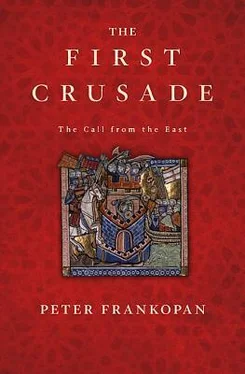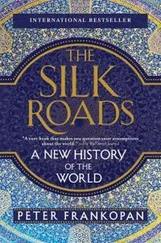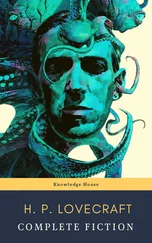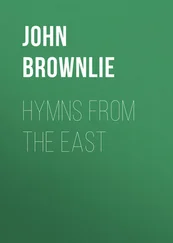7 The Response of the West
1. See Riley-Smith, First Crusade , pp. 13 – 30; Tyerman, God’s War , pp. 58–89. • 2. For Urban’s itinerary, Becker, Papst Urban II , vol. 2, pp. 435–58. • 3. Gregory VII, Register , 1.46, p. 50; Devic and Vaissete, Histoire générale de Languedoc , 3, p. 465 • 4. Devic and Vaissete, Histoire générale de Languedoc , 5, pp. 747–8. • 5. Gregory VII, Register , 1.46, p. 50; 8.16, pp. 381–2. • 6. Patrologia Latina , 151, col. 562. • 7. Annales Besuenses , MGH, SS , 2, p. 250; Annales S. Benigni Divionensis , MGH, SS , 5, p 43. • 8. Patrologia Latina , 150, col. 1388; 151, col. 422. • 9. Robert the Monk, I.1 pp. 80–1. • 10. Robert the Monk, I.2, pp. 81–2; Fulcher of Chartres, I.4.iv, p. 68; Guibert of Nogent, II.5, p. 117. Although the main narrative accounts of the speech at Clermont were written several years later, the message of the sufferings in the east is captured in the contemporary sources, for example, Hagenmeyer, Epistulae , pp. 136, 137–8; Wiederhold, ‘Papsturkunden in Florenz’, pp. 313–14; Kehr, Papsturkunden in Spanien, pp. 287–8; Halphen and Poupardin, Chronique des comtes d’Anjou , pp. 237–8. • 11. Baldric of Dol, IV, pp. 15–16. • 12. Hagenmeyer, Epistulae , pp. 136–7 • 13. Baldric of Dol, IV, p. 16. • 14. Baldric of Dol, Vita Beati Roberti de Arbisello , Patrologia Latina 162, cols. 1050–1. • 15. Hugh of Flavigny, Chronicon , MGH, SS , 8, pp. 474–5. • 16. Bull, Knightly Piety , pp. 250–81. • 17. For Urban’s instructions, Baldric of Dol, I, p. 15. • 18. S. d’Elbenne and L-J. Dennis (eds.), Cartulaire du chapitre royal de Saint-Pierre de la Cour du Mans (Paris, 1903–7), no. 11, p. 15. • 19. J. Richard, ‘Le Cartulaire de Marcigny-sur-Loire 1045–1144. Essai de reconstitution d’un manuscript disparu’, Analecta burgundica (1957), 119, p. 87. • 20. B. de Broussillon, Cartulaire de Saint-Aubin d’Angers (1903), 1, no. 354, p. 407. • 21. Hagenmeyer, Epistulae , p. 136. • 22. Ibid., pp. 137–8. • 23. Chronica Monasterii Casinensis , IV.11, p. 475. For the spiritual rewards on offer, Riley-Smith, First Crusade , pp. 13–30. • 24. Kehr, Papsturkunden in Spanien , p. 287. • 25. H. Cowdrey, ‘Martyrdom and the First Crusade’, in Edbury, Crusade and Settlement , pp. 45–56; J. Flori, ‘L’example de la Première Croisade’, Cahiers de civilisation médiévale 34 (1991), pp. 121–39; C. Morris, ‘Martyrs of the field of battle before and during the First Crusade’, Studies in Church History 30 (1993), pp. 93–104. • 26. Guérard, Cartulaire de l’abbaye de Saint-Victor de Marseilles , 1, pp. 167–8. • 27. C. Métais, Cartulaire de l’abbaye de la Sainte Trinité de Vendôme , 4 vols. (Paris, 1893–1900), 2, p. 39; V. Thuillier (ed.), Ouvrages posthumes de D. Jean Mabillon et D. Thierri Ruinart , 3 vols. (Paris, 1724), 3, pp. 387–90; P. Jaffé (ed.), Regesta Pontificum Romanorum , 2 vols. (Leipzig, 1885–8), 1, nos. 5656, 5649; 5647. • 28. Gesta Francorum , I, p. 2; Hagenmeyer, Epistulae , p. 137. • 29. H. Klein, ‘Eastern Objects and Western Desires: Relics and Reliquaries between Byzantium and the West’, Dumbarton Oaks Papers 58 (2004), pp. 283–314. 30. Halphen and Poupardin, Chronique des comtes d’Anjou , pp. 237–8. • 31. A. Gieysztor, ‘The Genesis of the Crusades: The Encyclical of Sergius IV’, Medievalia et Humanistica 5 (1949), pp. 2–23 and 6 (1950), pp. 3–34. However, also see H. Schaller, ‘Zur Kreuzzugsenzyklika Papst Sergius IV’, in H. Mordek (ed.), Papsttum, Kirche und Recht im Mittelalter. Festschrift für Horst Fuhrmann (Tübingen, 1991), pp. 135–54. • 32. Recueil des chartes de Cluny , 5, no. 3703. • 33. Ibid., nos. 3737, 3755. • 34. Ibid., no. 3712. • 35. R. Juënin, Nouvelle histoire de l’abbaie royale et collégiale de Saint Filibert , 2 vols. (Dijon, 1733), 2, p. 135. • 36. Robert the Monk, I.2, p. 82; Fulcher of Chartres, I.4.iv, p. 68; Guibert of Nogent, II.5, p. 117; Gesta Francorum , I, p. 7. • 37. C. Chevalier, ‘Cartulaire de l’abbaye de St. Chaffre du Monastier’, in Collection de cartulaires dauphinois (Paris, 1869–1912), 8, pp. 139–41. For these, and many other examples, RileySmith, First Crusade , pp. 31ff. • 38. E. Poncelet (ed.), Cartulaire de l’Eglise St Lambert de Liège , 5 vols. (Brussels, 1869), 1, p. 47. • 39. Orderic Vitalis, IX.3, 5, pp. 26, 32; Hugh of Flavigny, II, pp. 474–5. • 40. Guibert of Nogent, II, 17, pp. 133–4. • 41. For Philip’s excommunication, Somerville, Councils of Urban II , pp. 87, 97, 98. For no one having a kind word about Bertrada, Chronica de gestis consulum Andegavorum , in Halphen and Poupardin, Chronique des comtes d’Anjou , p. 67; for Philip abandoning his wife, Bertha of Holland, because of her stoutness, William of Malmesbury, 3.257, p. 474. • 42. Guibert of Nogent, II.17, pp. 133–4; Mansi, Sacrorum Concilium Amplissima Collectio 20, col. 937; J. Verdon (ed.), Chronique de Saint-Maixent (Paris, 1979), p. 154; Somerville, Councils of Urban II , p. 90. • 43. Gesta Francorum , I, p. 7. • 44. Robert the Monk, II.3, pp. 91–2. • 45. Codice Diplomatico Barese , 5, p. 41. • 46. Anna Komnene, XIII.11, pp. 383–4. • 47. Anna Komnene, V.6, p. 144. • 48. According to one Arabic author, Roger refused to have anything to do with the Crusade and ‘raised his leg to let out a loud fart’ when he heard the initial plans – which Ibn al-Athir states involved northern Africa, rather than Jerusalem. This colourful story gives an idea of Roger’s unwillingness to antagonise Muslim traders who played a vital role in making Sicily enormously wealthy. AH 491/Dec. 1097–Dec. 1098, p. 13. • 49. Jaffe, Regesta pontificum Romanorum , no. 5608; Hagenmeyer, Epistulae , p. 136. • 50. Guérard, Cartulaire de SaintVictor , p. 802. • 51. Anna Komnene, X.7, pp. 279–80. • 52. Albert of Aachen, I.23, p. 96; Guibert of Nogent, VII.31, p. 328. • 53. Barber and Bate, Letters , p. 22. • 54. Patrologia Latina , 157, col. 162B. • 55. Robert the Monk, I.2, pp. 81–2. • 56. Recueil des chartes de l’abbaye de Cluny , 5, p. 51. • 57. Wiederhold, ‘Papsturkunden’, pp. 313–14. • 58. Hagenmeyer, Epistulae , p. 137. • 59. Devic and Vaissete, Histoire générale de Languedoc , 5, pp. 757–8. • 60. Bernold of Constance, p. 520. • 61. For example, Fulcher of Chartres, I.4, p. 68; Baldric of Dol, I, pp. 15–16. • 62. Robert the Monk, II.2, p. 82. • 63. For example, at Marmoutier and Tours in the spring of 1096. Halphen and Poupardin, Chronique des comtes d’Anjou , pp. 237–8; O. Guillot, Le Comte d’Anjou et son entourage au XIe siècle (Paris, 1972), p. 242. • 64. See, for example, W. Purkiss, Crusading Spirituality in the Holy Land and Iberia, c.1095–c.1187 (Woodbridge, 2008), esp. pp. 120–38. • 65. Anna Komnene XI.1, p. 297. Also Gesta Francorum , II, p. 16; Albert of Aachen, I.15, pp. 283–4. • 66. For the date of the foundation of the monastery, see J. Gay, ‘L’abbaye de Cluny et Byzance au début du XII siècle’, Echos d’Orient 30 (1931), pp. 84–90, but also J. Shepard, ‘The “muddy road” of Odo of Arpin from Bourges to La Charité sur Loire’, in P. Edbury and J. Phillips (eds.), The Experience of Crusading: Defining the Crusader Kingdom (Cambridge, 2003), p. 23. • 67. Anna Komnene, X.5, p. 276. • 68. Albert of Aachen, II.7, p. 70. • 69. Albert of Aachen, II.17, p. 86. • 70. Albert of Aachen, II.7, pp. 70–2. • 71. Robert the Monk, II.11, p. 95. 72. Raymond of Aguilers, I, pp. 16–17. • 73. Raymond of Aguilers, I, p. 17. • 74. Raymond of Aguilers, I, p. 17. • 75. For estimates of numbers taking part, France, Victory in the East , pp. 122–42; B. Bachrach, ‘The siege of Antioch: A study in military demography’, War in History 6 (1999), pp. 127–46; J. RileySmith, ‘Casualties and the number of knights on the First Crusade’, Crusades 1 (2002), pp. 13–28. • 76. Fulcher of Chartres, I.6.ix, p. 73. • 77. Fulcher of Chartres, I.13.iv, p. 88. • 78. Anna Komnene, X.5, p. 274. • 79. Anna Komnene, X.5.vi, p. 275.
Читать дальше











